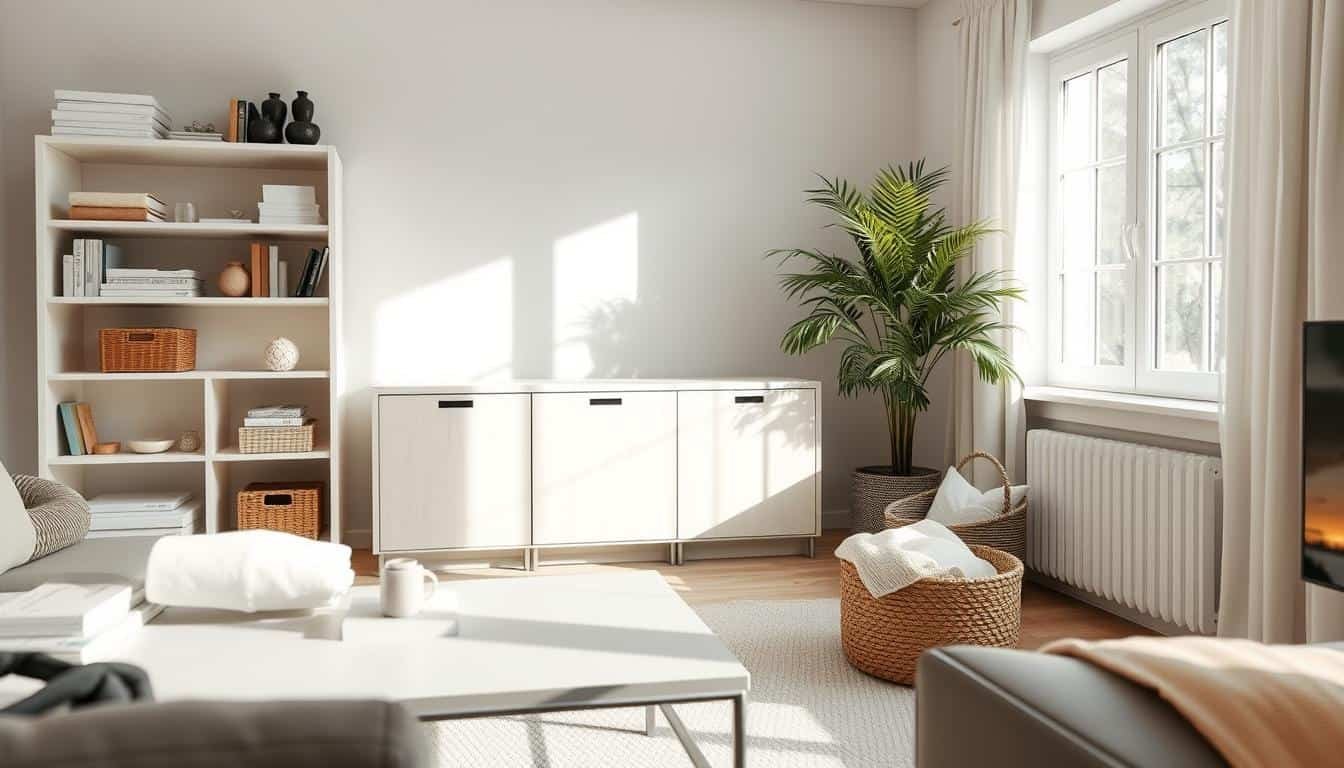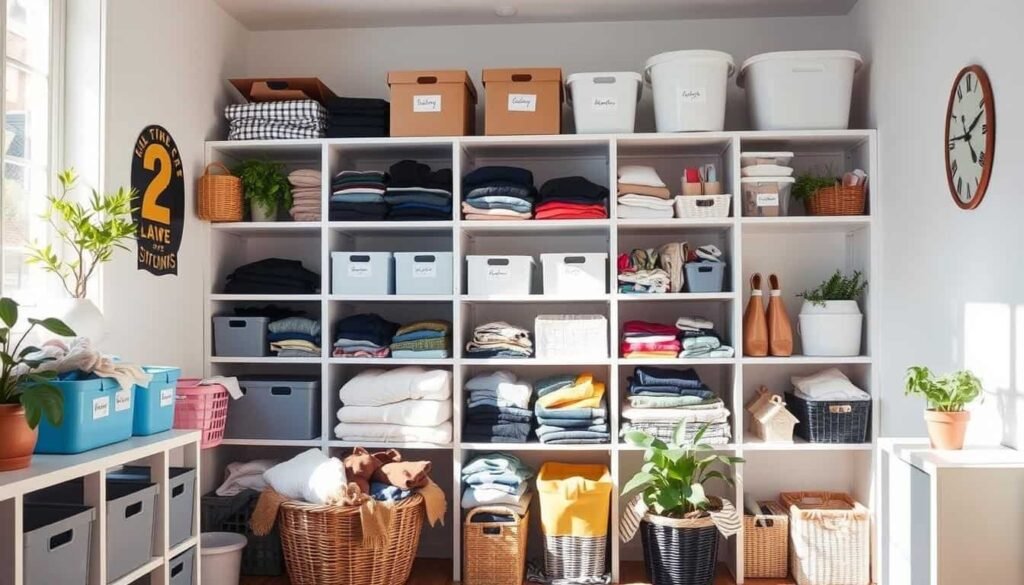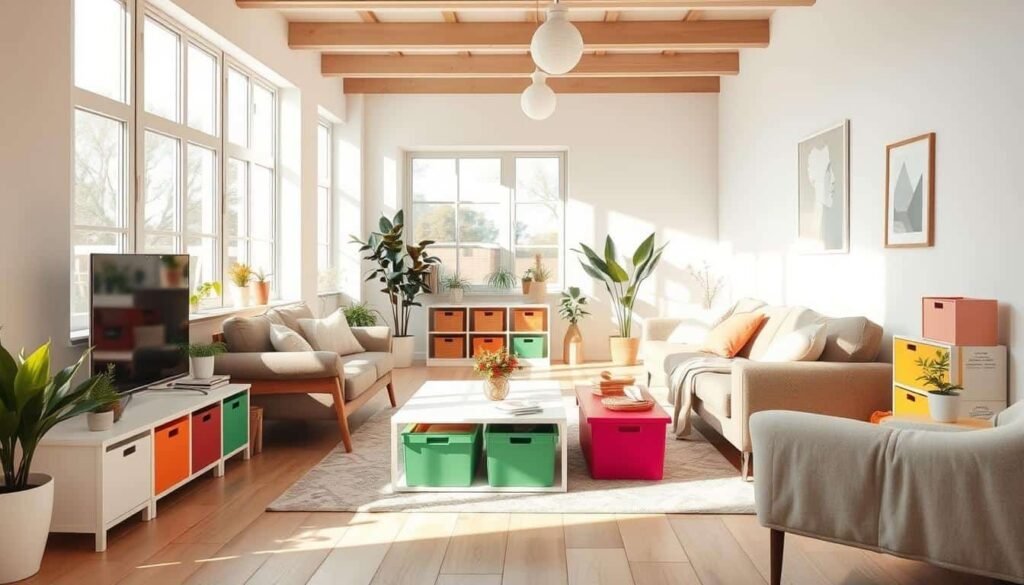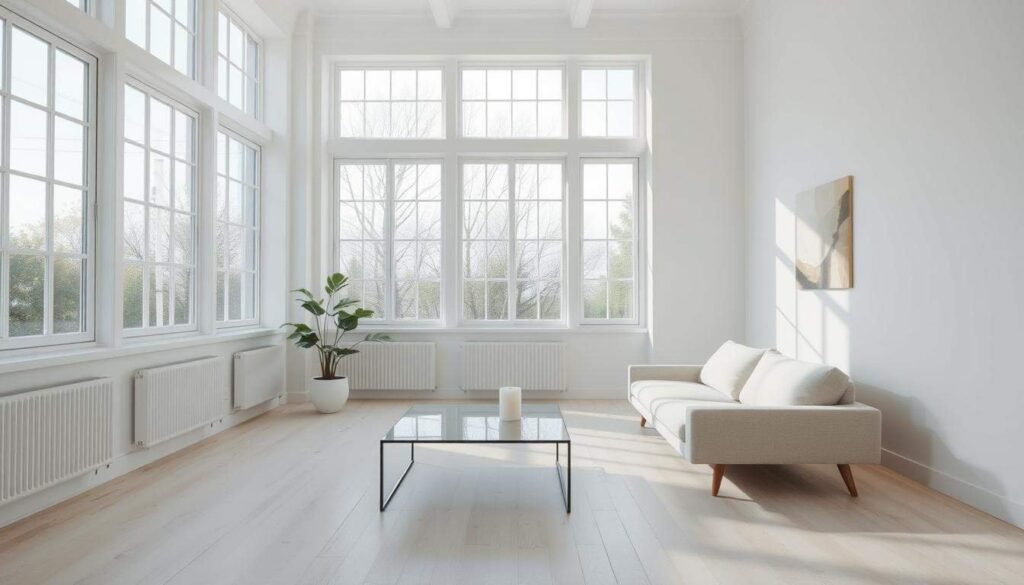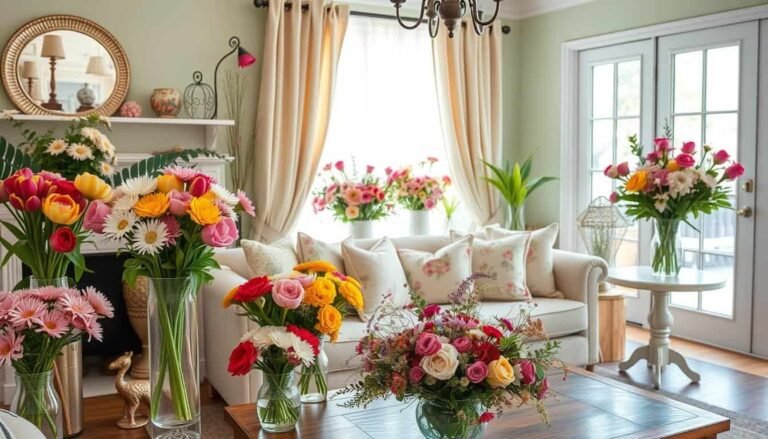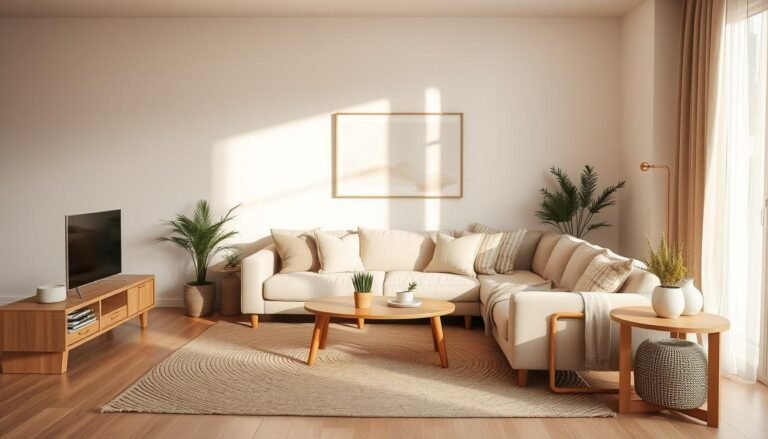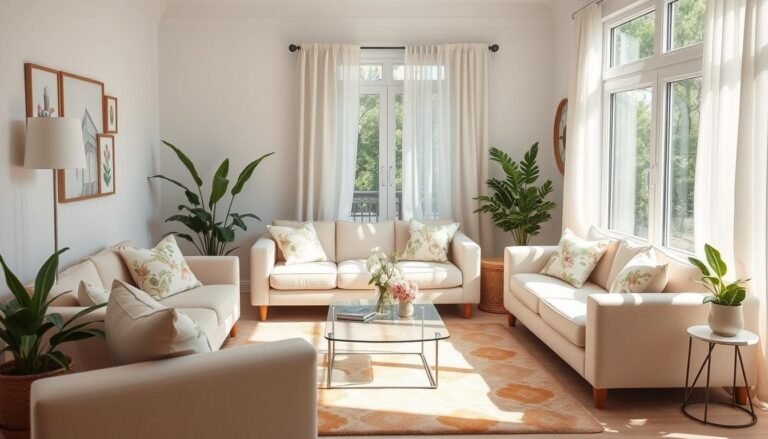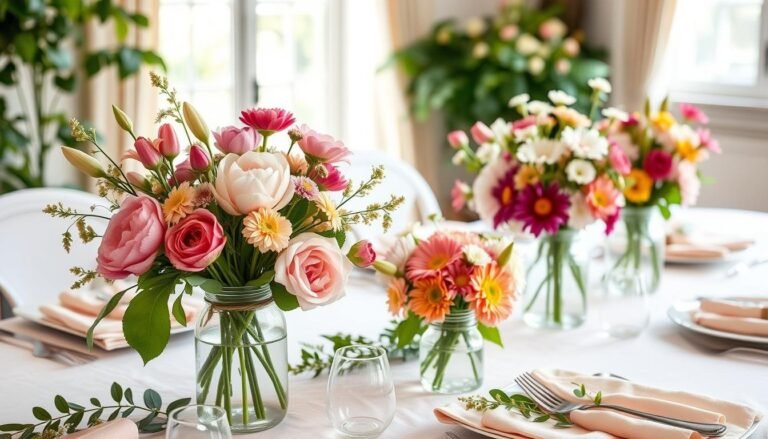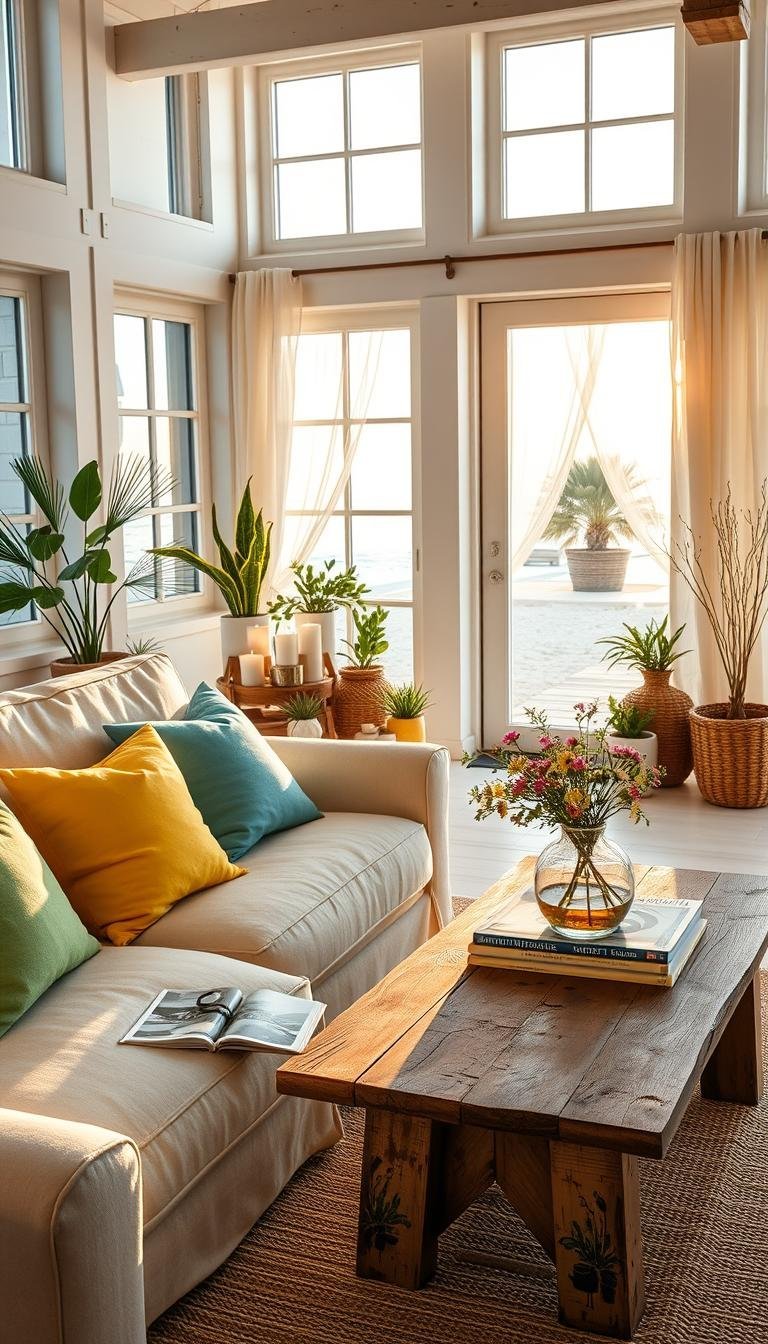How to Declutter and Organize for a Fresh Start
This post may contain affiliate links. As an Amazon Associate, I earn from qualifying purchases. If you click and buy, we may earn a small commission at no extra cost to you. Learn more.
Are you feeling overwhelmed by the clutter in your home? Yearning for a fresh start and a more organized living space? Look no further! This comprehensive guide will provide you with practical decluttering tips and strategies to transform your living environment and embrace a more peaceful, productive lifestyle.
Decluttering your home can have a profound impact on your overall well-being, freeing up physical and mental space to focus on what truly matters. By learning how to effectively organize and simplify your surroundings, you’ll be empowered to create a harmonious and inviting atmosphere that inspires creativity, productivity, and a sense of calm.
Contents
- 1 Understanding the Mindset of Decluttering
- 2 Getting Started with a Decluttering Plan
- 3 Effective Decluttering Techniques
- 4 Decluttering Different Spaces in Your Home
- 5 Sorting and Categorizing Your Items
- 6 Tips for Keeping Your Decluttered Space Organized
- 7 Technology Tools for Decluttering
- 8 Involving Family in the Decluttering Process
- 9 Handling Sentimental Items
- 10 Maintaining Your Decluttered Home
- 11 Moving Forward: Transforming Your Space
- 12 FAQ
Key Takeaways
- Discover the emotional benefits of decluttering and how it can improve your overall well-being.
- Learn how to create a personalized decluttering plan with achievable goals and a realistic timeline.
- Explore effective decluttering techniques, such as the Four-Box Method and the Marie Kondo approach, to tackle different areas of your home.
- Develop strategies for sorting, categorizing, and maintaining your decluttered spaces.
- Incorporate technology tools and apps to support your decluttering journey.
By the end of this guide, you’ll be equipped with the knowledge and confidence to embark on a transformative decluttering journey, paving the way for a fresh start and a more organized, functional, and inviting living space. Let’s dive in and discover the path to a decluttered, rejuvenated home!
Understanding the Mindset of Decluttering
Decluttering goes beyond simply organizing your physical space – it’s a profound journey of self-discovery and emotional well-being. By embracing the principles of minimalism and life simplification, you can unlock the true benefits of decluttering and experience a profound sense of stress reduction in your daily life.
The Emotional Benefits of Decluttering
Letting go of possessions that no longer serve you can be a cathartic and liberating experience. As you declutter, you’ll find that it not only frees up physical space but also creates a sense of mental clarity and emotional lightness. Decluttering can help alleviate feelings of anxiety, overwhelm, and attachment, allowing you to focus on what truly matters in your life.
Recognizing Your Clutter Triggers
- Understand the root causes of your clutter: Is it a coping mechanism for stress? A desire to hold onto the past? Or simply a habit that has spiraled out of control?
- Identify the specific areas or activities that tend to generate the most clutter in your life, such as online shopping, collecting memorabilia, or keeping old documents.
- Develop strategies to address these clutter triggers, whether it’s setting spending limits, creating designated storage spaces, or practicing mindfulness when acquiring new items.
By cultivating a deeper understanding of your relationship with possessions and the emotional drivers behind your clutter, you’ll be better equipped to embark on a meaningful and lasting decluttering journey.
“The true purpose of decluttering is not just about the stuff, but about creating space for what truly matters.”
Getting Started with a Decluttering Plan
Embarking on a decluttering journey can be overwhelming, but with a well-thought-out plan, you can take control of the process and achieve the desired results. Whether you’re tackling your entire home or starting with a specific area, the key is to set achievable goals and establish a timeline that works for you.
Setting Achievable Goals
Before you dive into decluttering, take a moment to reflect on what you hope to accomplish. Do you want to create more living space, streamline your daily routine, or simply enjoy a sense of calm in your home? Whatever your motivation, it’s important to set specific and measurable goals that will guide your efforts. Break down larger objectives into smaller, actionable steps to make the process feel more manageable.
Creating a Timeline for Your Decluttering
Decluttering doesn’t happen overnight, so it’s essential to create a realistic timeline that fits your lifestyle and commitments. Start by assessing how much time you can realistically devote to the task each week or month, and then break down your goals into a step-by-step schedule. Remember to be flexible, as unexpected challenges may arise, and be prepared to adjust your timeline accordingly.
By establishing a clear plan and setting achievable goals, you can embark on your decluttering journey with confidence and make steady progress towards a more organized and stress-free home. Embrace the process, and don’t be afraid to seek support from friends or family along the way.
Effective Decluttering Techniques
Decluttering your home can feel overwhelming, but with the right techniques, you can transform your space and enjoy the benefits of a minimalist lifestyle. Two popular decluttering methods that have gained widespread attention are the Four-Box Method and the Marie Kondo Approach.
The Four-Box Method
The Four-Box Method is a straightforward and practical way to tackle clutter. It involves dividing your belongings into four categories: keep, donate, sell, and trash. By sorting your items into these boxes, you can easily identify what you truly need and what can be let go. This method encourages you to be honest with yourself and make decisive decisions, ultimately leading to a more organized and decluttered home.
The Marie Kondo Approach
The Marie Kondo method, also known as the KonMari approach, focuses on the emotional connection you have with your possessions. Kondo encourages you to keep only the items that “spark joy” in your life. This mindful decluttering process can be liberating, as it helps you let go of items that no longer serve you or bring you happiness. By following the KonMari method, you can create a more intentional and fulfilling living environment.
Regardless of the decluttering technique you choose, the key is to approach the process with patience, flexibility, and a positive mindset. Remember, your home is a reflection of your lifestyle, and by embracing decluttering tips and minimalism, you can create a space that aligns with your values and supports your well-being.
“The true purpose of a thing will surface only when its owner lets go of it.” – Marie Kondo
Decluttering Different Spaces in Your Home
Decluttering your home can be a transformative experience, but it’s essential to approach each room with a targeted strategy. Whether you’re tackling the living room, bedroom, or kitchen, the key to clutter-free living lies in understanding the unique organizational needs of each space. Let’s dive into room-specific decluttering tips to help you create functional, visually appealing areas throughout your home.
Living Room Decluttering Strategies
The living room is often the heart of the home, where we gather with family and friends. To keep this space feeling inviting and uncluttered, focus on eliminating excess furniture, decor, and media. Sort through your entertainment system, books, and decorative items, keeping only those that truly spark joy or serve a practical purpose. Invest in storage solutions like shelves, baskets, and ottomans to neatly conceal any remaining essentials.
Bedroom Decluttering Tips
Your bedroom should be a serene oasis, a sanctuary from the outside world. Start by decluttering your closet, getting rid of clothes you no longer wear. Organize your dresser, nightstands, and other surfaces, ensuring that each item has a designated home. Consider implementing an under-the-bed storage system to maximize space and reduce visual clutter.
Kitchen Decluttering Essentials
The kitchen is often the busiest room in the house, and it’s easy for clutter to accumulate. Begin by clearing out your cabinets and drawers, tossing expired food items and donating kitchen gadgets you no longer use. Invest in storage containers, racks, and organizers to keep your cooking essentials neatly arranged. Declutter your countertops by only displaying necessary appliances and decor.
By tackling each room with a focused approach, you’ll be well on your way to creating a harmonious, clutter-free living environment that supports your home organization goals and promotes a sense of calm and serenity.
“The essence of the beautiful is unity in variety.” – W. Somerset Maugham
Sorting and Categorizing Your Items
Downsizing and home organization are vital steps in creating a clutter-free, harmonious living space. The key to success lies in systematically sorting and categorizing your belongings. By adopting a methodical approach, you can make informed decisions about what to keep, donate, sell, or discard.
Keep, Donate, Sell, or Toss?
As you sort through your possessions, it’s essential to evaluate each item objectively. Ask yourself the following questions:
- Does this item serve a practical purpose in my daily life?
- Does it spark joy or hold sentimental value?
- Can it be effectively repurposed or passed on to someone who will appreciate it?
Armed with these considerations, you can then decide whether to keep, donate, sell, or discard the item. This thoughtful process will help you determine what truly aligns with your lifestyle and personal values.
Creating Categories for Better Organization
Once you’ve sorted your belongings, the next step is to organize them into logical categories. This will not only streamline your downsizing efforts but also make it easier to maintain a clutter-free home in the long run. Some effective categorization strategies include:
- Room-based organization (e.g., kitchen, bedroom, living room)
- Function-based grouping (e.g., office supplies, hobby items, seasonal decor)
- Material-based sorting (e.g., electronics, textiles, paper documents)
Implementing these organizational techniques will not only enhance the visual appeal of your living spaces but also make it simpler to find and access the items you need, ultimately supporting your overall home organization goals.
Tips for Keeping Your Decluttered Space Organized
Achieving a clutter-free living environment is a significant accomplishment, but maintaining that sense of order and minimalism requires ongoing effort. Fortunately, there are practical strategies you can implement to keep your newly decluttered space organized and free from the creeping return of clutter.
Establishing Daily Habits
One of the keys to sustaining a decluttered lifestyle is developing simple, daily habits that support your organizational goals. This could include:
- Spending a few minutes each morning tidying up your living spaces
- Implementing a “one-in, one-out” rule when bringing new items into your home
- Regularly reviewing and purging your possessions to prevent unnecessary accumulation
Adopting a Minimalist Lifestyle
Embracing the principles of minimalism can be a powerful way to keep your decluttered space organized in the long run. By consciously limiting the number of items you own and focusing on only those that truly add value to your life, you can maintain a clutter-free living environment with ease.
“The ultimate goal of minimalism is not having; it’s being.” – Joshua Fields Millburn
Adopting a minimalist mindset can involve practices such as carefully considering each new purchase, finding creative storage solutions, and regularly reassessing your possessions to ensure they align with your values and needs.
By establishing daily habits and embracing a minimalist lifestyle, you can ensure that your decluttered space remains organized and inviting for years to come, allowing you to fully enjoy the benefits of clutter-free living.
Technology Tools for Decluttering
In today’s digital age, there’s a wealth of technology tools and apps that can streamline your decluttering efforts and boost your productivity. By harnessing the power of these digital solutions, you can simplify the process of organizing your physical and virtual spaces, leading to a more efficient and stress-free lifestyle.
Apps to Help You Declutter
Numerous mobile apps have been designed to assist with decluttering and organization. Some popular options include:
- Decluttr – Allows you to quickly and easily sell your unwanted items, freeing up space while earning some extra cash.
- Unroll.me – Helps to manage your email subscriptions, unsubscribing from unwanted newsletters and keeping your inbox clutter-free.
- Sortly – Provides a visual inventory of your belongings, making it easier to track what you have and where it’s stored.
Digital Decluttering Techniques
In addition to dedicated apps, there are several digital decluttering techniques that can help you streamline your online presence and reduce digital clutter:
- Inbox Zero – Regularly clearing out your email inbox, archiving or deleting messages you no longer need.
- Cloud-based Storage – Utilizing cloud storage services to organize and back up your digital files, reducing the need for physical storage space.
- Digital File Organization – Adopting a consistent file-naming system and creating a logical folder structure to keep your computer or mobile device tidy.
By embracing these decluttering tips and productivity boost tools, you can reclaim control over your digital and physical environments, paving the way for a more organized and stress-free lifestyle.
“Clutter is not just the stuff on your floor – it’s anything that stands between you and the life you want to be living.”
Involving Family in the Decluttering Process
Decluttering your home can be a daunting task, but it becomes much more manageable when you involve your family. By engaging your loved ones in the home organization journey, you can foster a sense of shared responsibility and make the process more enjoyable for everyone.
Tips for Engaging Kids
When it comes to decluttering with children, the key is to make it a fun and interactive experience. Encourage your kids to participate by allowing them to sort through their own belongings and decide what to keep, donate, or toss. Offer rewards or incentives, such as a special treat or activity, to motivate them to contribute. Involve them in the decision-making process and help them understand the importance of life simplification and home organization.
Team Strategies for Teens
Engaging teens in the decluttering process can be a bit more challenging, but with the right approach, you can get them on board. Encourage them to take ownership of their own spaces, such as their bedrooms or study areas. Offer to help them create a system that works for their needs, and involve them in the planning and execution. Emphasize the benefits of a clutter-free environment, such as increased productivity and a sense of calm.
By involving your family in the decluttering process, you can turn it into a collaborative effort that strengthens your relationships and instills valuable life skills. Together, you can create a more organized, functional, and enjoyable living space for everyone to enjoy.
“The best way to get started is to quit talking and begin doing.” – Walt Disney
Handling Sentimental Items
Decluttering can be a daunting task, especially when it comes to sentimental items that hold emotional value. As you embark on your downsizing journey, it’s important to navigate this challenge with sensitivity and practicality.
Assessing Emotional Attachments
Take the time to carefully examine your sentimental items and assess the emotional attachment you have to them. Ask yourself, “Does this item truly bring me joy, or am I holding onto it out of habit or a sense of obligation?” Honest self-reflection is key to making informed decisions about what to keep and what to let go.
Finding Balance with Memory Keeping
Preserving memories doesn’t always require keeping every physical object. Consider alternative ways to capture and cherish your memories, such as:
- Digitizing photos and documents
- Creating a scrapbook or memory box with a few select items
- Keeping a journal or audio recordings to document your experiences
This approach can help you find a balance between decluttering and honoring your memories without accumulating excessive physical clutter.
“The true purpose of decluttering is not to get rid of everything, but to make room for what truly matters.”
By carefully evaluating your sentimental items and finding creative ways to preserve your memories, you can successfully incorporate decluttering tips into your downsizing process without sacrificing the emotional connection to your past.
Maintaining Your Decluttered Home
After the hard work of decluttering your space, it’s essential to establish routines that help you maintain your newly organized home. Developing a few simple habits can go a long way in preventing clutter from creeping back in and keeping your living environment consistently tidy and functional.
Weekly Decluttering Checklists
Designate a specific time each week to quickly assess your home organization. Use a weekly decluttering checklist to ensure you’re staying on top of any new clutter accumulation. This might include:
- Quickly scanning each room for items that need to be put away
- Wiping down surfaces and ensuring everything has a designated storage spot
- Reviewing your calendar and addressing any upcoming organizational needs
Spending just 15-30 minutes per week maintaining your decluttered spaces can make a significant difference in preserving yourhome organizationandclutter-free living.
Monthly Organization Rituals
In addition to weekly check-ins, set aside time each month for a more thorough organization review. This could involve:
- Rotating seasonal items and donating anything no longer needed
- Deep cleaning specific areas of your home
- Evaluating your storage solutions and making adjustments as needed
“The secret to getting ahead is getting started.” – Mark Twain
Establishing these regular organizational rituals will help you sustain your decluttered home and prevent the gradual reaccumulation of clutter. With a little time and diligence, you can enjoy the benefits of a home organization system that works for you.
Moving Forward: Transforming Your Space
Congratulations on taking the first step towards a fresh start by decluttering your living space. Now, it’s time to maximize the full potential of your decluttered environment and create a functional, inviting atmosphere that promotes mental clarity and enhances your overall quality of life.
Incorporating Storage Solutions
Effective storage solutions are the key to maintaining your decluttered space. Explore a range of practical and visually appealing storage options, such as sleek shelving units, modular organizers, and hidden compartments, to neatly tuck away necessary items while maintaining a clean, uncluttered look. Prioritize versatile storage that can adapt to your evolving needs and preferences.
Creating a Functional and Inviting Atmosphere
Transform your decluttered space into a serene and inspiring haven. Incorporate soothing colors, natural lighting, and calming textures to foster a sense of tranquility. Arrange your furniture and decor thoughtfully, ensuring a harmonious flow and easy accessibility. Incorporate elements that spark joy, such as fresh greenery, artwork, or personal mementos, to create a space that truly reflects your style and personality.
FAQ
What are the emotional benefits of decluttering?
Decluttering can have a profound impact on your mental and emotional well-being. By removing unnecessary possessions, you can experience a greater sense of calm, reduced stress and anxiety, and improved focus and productivity. Decluttering can also boost feelings of control, accomplishment, and personal empowerment.
How do I create a decluttering plan with achievable goals?
Start by setting realistic, measurable goals for your decluttering project. Break down your larger objectives into smaller, manageable tasks with specific timelines. This will help you stay motivated and on track throughout the process. Consider creating a decluttering timeline to provide structure and keep you focused.
What are some popular decluttering techniques I can use?
Two widely recognized decluttering methods are the Four-Box technique and the KonMari method. The Four-Box method involves sorting items into four categories: keep, donate, sell, and toss. The KonMari approach focuses on keeping only possessions that “spark joy” in your life. Both techniques can be highly effective in streamlining your belongings.
How can I maintain a decluttered and organized home long-term?
Establishing daily habits and adopting a minimalist mindset are key to sustaining a clutter-free environment. Implement simple routines, such as a weekly decluttering checklist or monthly organization rituals, to prevent clutter from accumulating. Additionally, embrace the principles of minimalism by being mindful about the items you bring into your home and regularly evaluating their purpose and value.
What are some tips for involving my family in the decluttering process?
Engaging your family, especially children and teens, can make the decluttering journey more efficient and enjoyable. Develop age-appropriate strategies to get kids excited about organizing their own spaces. Encourage teens to take ownership of their belongings and create team-based decluttering projects. Fostering a collaborative approach can promote shared responsibility and long-term success.
How do I handle sentimental items during the decluttering process?
Decluttering sentimental items can be emotionally challenging, but it’s important to find a balance between preserving memories and avoiding excessive accumulation. Assess your emotional attachments to these items and consider alternative ways to capture and cherish them, such as taking photographs or creating a memory box. This will help you let go of physical objects while still honoring their significance.

